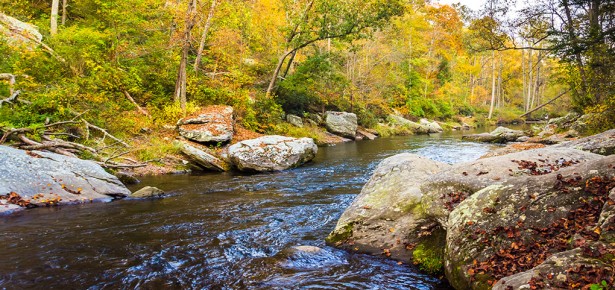
In nearly every article about Earth Day, whether it is about water scarcity in South Africa or algal blooms in Great Lakes, the same traditional message is underscored: embrace environmental science and change wasteful and polluting behavior. This message is fine, but frankly it is not enough. The next generation of conservation need to strike a second tone. Environmental leaders should embrace techniques and discoveries that underlie the science of strategic conservation and change from inefficient methods for targeting expensive conservation projects that sometimes do not make much of a difference to proven techniques that can get “a bigger bang for the buck.”
Conservation has a rich and proud history in the US.
Yosemite was protected in 1872 and our national park system has protected unique natural wonders, such Yellowstone National Park and the Grand Canyon. The funders of conservation—primarily government agencies and non-profit foundations—have historically focused exclusively on the ecological or scenic benefits of a project and ignored the costs of protection. This one-sided approach may have made sense in the early days of conservation, but today this approach is no longer environmentally-friendly. It often wastes funds, often from tax-payers, that could have been used for additional preservation.
In reality, few unique, crown-jewel conservation projects remain. Conservation today focuses on preventing excess nutrients from fertilizers running off farm fields, protecting local open space, preserving agricultural lands, and protecting clean water, clean air, and the natural processes from which all life depends. Conservation funders now must decide where to invest their limited funds among a large number of high-quality projects, which have close ‘substitutes’ with regards to public benefits they can provide. In other words, multiple projects can deliver the same type of environmental benefits, yet the cost of these projects can vary widely depending on the market.
Here’s a telling example of what we mean. In 2012, the National Park Service considered 34 projects totaling nearly 93,000 acres on its National Priority List. The total cost for these projects was approximately $110 million, which far exceeded the National Park Service’s available budget of approximately $30 million. The National Park Service selected two projects in Florida: one for $5.5 million that protected 43,000 acres in Big Cypress National Preserve and the other for $25 million that protected 477 acres in the Everglades National Park. In contrast, the principles of the science of strategic conservation would have recommended the National Park Service reallocate the $25 million and instead of protecting fewer than 500 acres in the Everglades protect 28,607 high quality acres in a dozen different states for the same cost that were also available for purchase by the National Park Service at that time.
To put it into another context, funders of conservation are like naïve shoppers who select wine solely on the taste ratings from the Wine Spectator. By ignoring the costs of their purchases, they get to the checkout counter only to wonder why their basket has so few bottles and they have no money left in their wallets.
The implications are important for both federal and local conservation. The academic literature has dozens of studies that show how strategic conservation can lead to better conservation outcomes. For instance, the US Forest Service’s Forest Legacy program could have preserved an additional 91,621 acres of high quality forest land (a 44% increase) in 2009 by using the principles of strategic conservation. In Delaware, strategic conservation could have protected 12,000 more acres of prime agricultural land (worth an estimated $25 million) over a ten-year period without costing the taxpayers additional money by using conservation markets and identifying the projects that provide the best bang for the buck. Even the US Military’s conservation programs could protect additional land worth tens of millions of dollars through the use of strategic conservation.
However, why conservation funders have been reluctant to adopt this science-based approach remains a bit of a mystery.
Funders continually make these decision errors while spending other people’s money and there’s little public outcry for better stewardship.
Baltimore County’s Agricultural Land Preservation Program in Maryland is an exception that illustrates what could be. Baltimore County tapped the tools of strategic conservation to choose which agricultural lands to save. In the first three years, Baltimore County was able to protect an additional 680 acres for the same amount of funds that would otherwise have been spent. That translated into a savings of approximately $5.4 million, amounting to a return on investment of more than 60 to 1. In other words, for every taxpayer dollar Baltimore County spent using its optimization model, it gained more than $60 in conservation benefits.
As budgets continue to be tight, funders of conservation need to follow the evidence from strategic conservation and change their selection techniques to ensure they spend other people’s money as wisely as they would their own.
The Science of Strategic Conservation
Protecting More with Less
Authors:
Kent D. Messer, University of Delaware
William L. Allen III, The Conservation Fund, Chapel Hill, USA
Paperback $54.99 | £34.99
Latest Comments
Have your say!